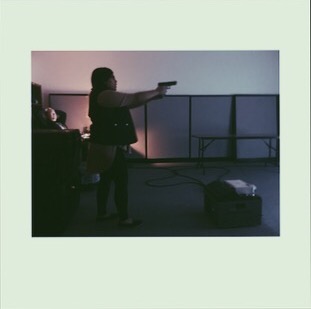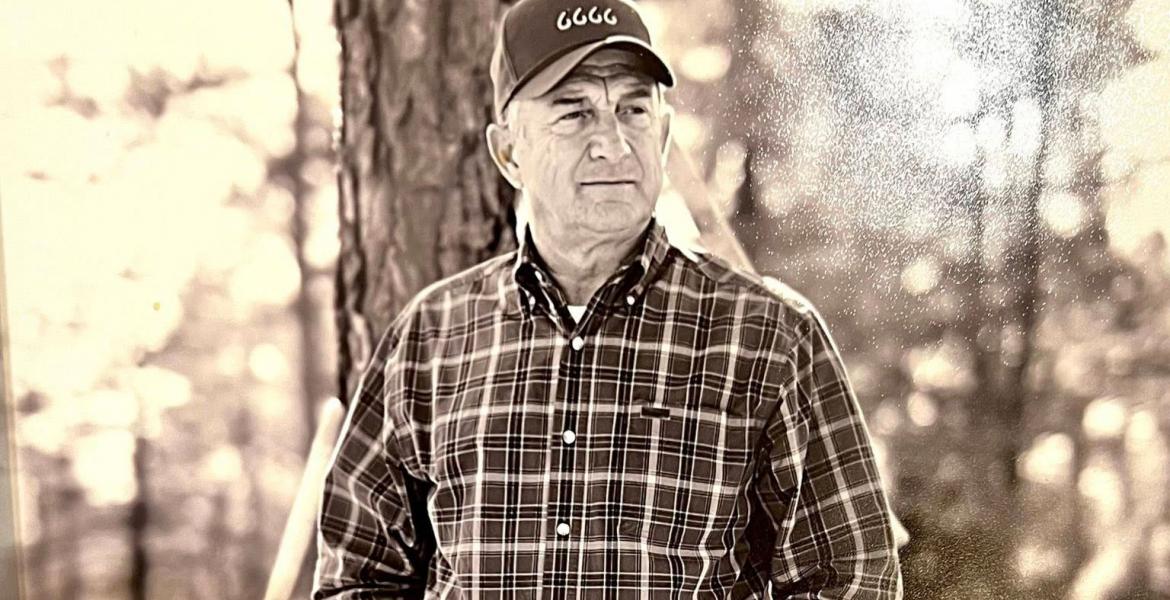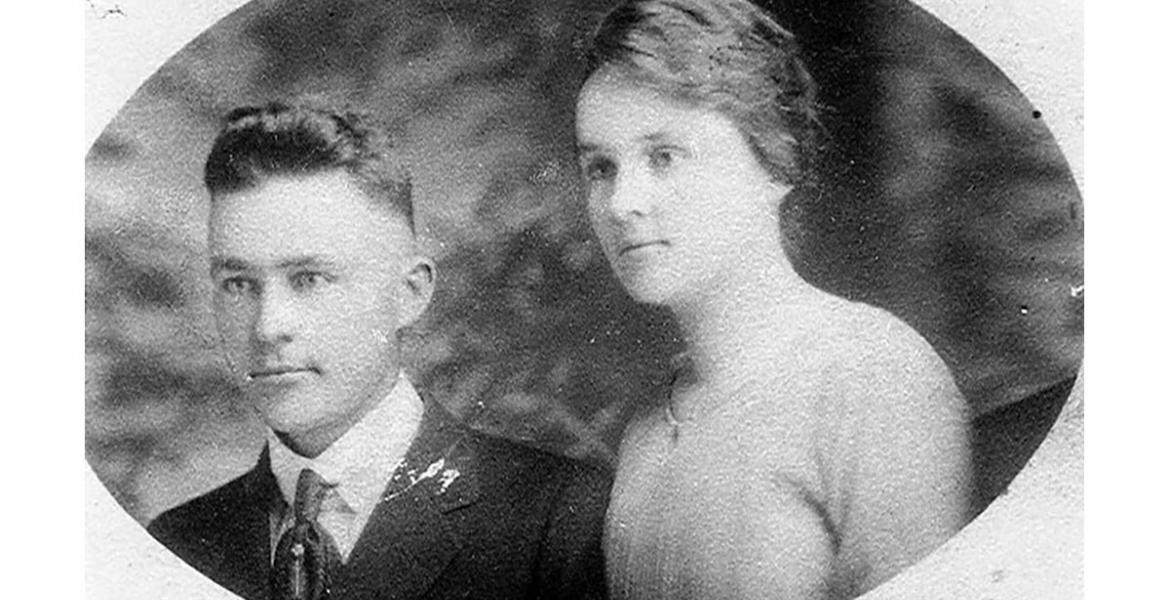SAN ANGELO, TX- Tuesday evening, three reporters of the LIVE! team had the opportunity to participate in a Prism Simulation Class put on by the San Angelo Police Department. This class showed how, when officers are at a scene, everything can change in a split second; and, in that second, officers must make the choice of whether to shoot or not to shoot.
Below, each reporter explained their experience from the simulation training.
Reporter Maura Ballard
As a journalist, I’m constantly watching the news, both on air and online. For a while now, the media continually focuses on reports of police brutality. Images and reports of, primarily people of color, being fatally shot under circumstances that bring up the following questions: “Why didn't they shoot him/her in the leg!” and “Why didn’t they use a Taser?” I will admit, as a female and person of color, these stories intrigue me and I too have asked questions. I wonder how somebody could shoot a person just coming out of his or her car to obey police orders, or how somebody could shoot someone just walking away from a local gas station. However, Tuesday evening I had the chance to work with several SAPD officers, as well as Police Chief Frank Carter, to take part in a Prism Simulation Class; and, as my fellow friends and co-workers expressed, it was a very eye-opening experience.

My two co-workers and I stepped into a small dark room, probably the size of a small living room. In front of us was a giant projection screen. As each of us went in, Tom Daniel, an SAPD instructor, explained that we would be taking on the role of a police officer in several different scenarios that police officers encounter on the job. Listening to Daniels, I was already quite nervous, so I decided to go last. By letting my co-workers experience this stimulation first, I was secretly seeing if I could do better (let the record show that I should probably not enlist in law enforcement any time soon). As I stepped up to the middle of the back of the room, I cracked a few jokes to get rid of the jitters; I was later told that Chief Carter was laughing behind me.
Then the stimulation began.
My first scenario, Daniel explained, included an “officer headed to a convenience store to grab a bottle of water.” The screen lit up, and a video, probably shot in the late 90s, began to play. I was headed to the convenience store. Everything seemed fine. According to the video, it was a nice summer day. But then the door to the convenience store pulled open and men stormed out. One of the men started to reach for something inside his trench coat. My instincts told me to raise my weapon, so I did; then I saw what looked to be a shot gun, so I started to shoot. I thought it was over, so I lowered my weapon, but then I noticed movement on the right. Another man was coming from around the corner with his arm raised. I immediately raised my weapon and began shooting.
The scenario ended.
It took me a moment to realize I had fired the weapon. Daniel’s voice broke my train of thought. I believe he said, “Good job.” But what came next shocked me. While engaging with them men, it felt like it lasted forever; everything moved in slow motion, but what I thought to have been at least 5 minutes was actually 1-2 minutes, and I had shot three, possibly fatal, shots.
My next scenario was not as successful.
I was told a man was robbing a house, so I thought to myself, Easy enough! The simulation began again, and I was now inside a living room. A man was shifting through a bookcase, and when he noticed me, he drew a knife. Again, I felt threatened, so I lifted my weapon, but only half way. The intruder began waving his knife at me while heading towards the door. I was not convinced he could hurt me, so I let him leave. The scenario ended, and the room went quiet.
I was asked, "What happened? Why did you not shoot?"
I said, "Well, because he did not seem a threat, unlike [in] the previous scenario."
Daniel looked at me a moment and began a new scenario.
This time I was being robbed by a duo: a female and male. She was yelling, “I’m just going to take your purse and I’ll leave.” From the corner of my eye, I saw a man start walking across the porch. I got nervous because I had already let one robber go, so I shoot. This time, however, I shot an innocent person. There was no weapon; there was no immediate threat, and I’d only be losing my credit cards.
Daniel then began a new scenario. This time, I was being robbed by a group of three. One guy was grabbing my purse and yelling. At this point, I feel overpowered, so I raised my weapon, and the man began to charge, but I shot too late. I had already been stabbed.
Though my last three scenarios were not as great as my first, it really taught me that when a police officer enters a hostile environment, he/she can not be sure of the danger--if the person of interest is a danger to others, or if the person is just in the wrong place at the wrong time. All officers go through extensive training on how to handle a weapon, and I believe that when they graduate the police academy, they can serve and protect. However, after tonight, after being on the other side of the trigger, I realize that police officers have one of the toughest jobs.
All my scenarios lasted about 1-3 minutes, and, in every single scenario, I was nervous. I questioned, what if I shoot this person and he is not armed? In a split second, my finger can pull the trigger and the bullet will release; an action that cannot be taken back.
So do I believe the police shootings covered by the media can be justified 100 percent? No. Do I believe that just because cops on glamorized TV shows know how to aim for only an arm or a leg, all police officers can? Most definitely not. But what I do know is that the men and women in blue have to sometimes make some of the toughest decisions in a split second, and what happens after that, they will have to leave in the hands of the law.
Reporter Stephanie Lindgren
Participating in the Prism Simulation was a very educational and eye opening experience.
As I stood in this dark room, with an interactive pistol in my hand, even knowing the interactive video was a simulation, I began to breath harder and stressed about making the right choice during whatever situation came up.
While waiting our turn, Tom Daniel, an instructor with the San Angelo Police Academy, gave us quite the inspirational talk about the choices police officers must make day to day. Daniel explained how it's easy for people to say that they would have done something different in a situation involving a shooting or an officer using force.
Daniel said, “It is very easy for civilians, just like it’s easy for us as non-combatants to say, 'Oh, I would have done this or I would have done that.”
While standing in front of the interactive screen, evaluating the situation I was watching, my mind raced a mile a minute.
During one of the situations, I was placed in a car with a ‘friend’. While in the car, a man approached my friend's window and asked if she had a lighter. When she did not respond, the man showed a knife and opened the car door.
All of this took place within a few seconds. During that time, it was my responsibility to assess the situation and decide if force needed to be used. As the man entered the vehicle, I chose to release three fatal shots at the suspect holding a knife to my ‘friend.’
After the simulation ended, the instructor told me that was the correct choice to make. He explained that, if I would have waited any longer, my ‘friend’ would have been stabbed and the man would have run away.
I was able to see that my life and my ‘friend’s’ life were in danger by the man wielding a knife. In a matter of a few seconds, I made the choice to use my gun and save my friend’s life. As fast as the man moved, I knew that I would not be able to disarm him or only shoot him in the arm to stop him.
During Daniel's speech, he also said, “We are human beings. We have to make snapped assessments and decisions. Shoot or don’t shoot; use force or don’t use force. No scenario is the same.”
This experience opened my eyes about the choices police officers are faced with. After this experience, I do encourage people to take a class such as this one for a new understanding of how officers must react when danger is detected, towards themselves or others.
Reporter Cameron Niblock
Attending the simulation training with SAPD was an eye opening experience. As someone who has no background in firing live ammo from a gun, I didn’t think I would have the reaction time needed to shoot, even if it was just a simulation with no bullets.
The components of the test was having a person step into the shoes of police officer in various real life situations. A video screen displayed in front of me played out the scenario, and, if I chose to point my gun and fire, the scene would graph out where my bullets hit, and more importantly who they hit.
The scenario for my experience showed two officers escorting a man in custody who was being brought in for a medical check-up. Before I could even comprehend the events playing out in front of me, a lady stood up in the waiting room with a concealed pistol she had taken out and was ready to take lethal force.
I watched as she grabbed the man in custody and ran for a corridor to escape. At this time, the simulation made a sharp noise of gun fire as I pulled the trigger and waited to see the action play out from my decision. A moment of regret came over me as I thought to myself, would I have been able to do this in real life?
In the rundown of the simulation, it showed I had struck the lady in lethal areas of her body. As the instructor talked to me after, he asked if I had heard any bullets before I pulled the trigger. I said no, for I was sure I was the only one taking lethal action to fire bullets in the scenario.
What had actually taken place was the lady fired off three rounds before I even thought about pulling the trigger. The instructor explained this phenomenon as “tunnel vision,” which meant I was so focused on what could happen that I didn’t see she had already pulled the gun out and taken lethal force against the other people in the room.
Tom Daniel, an instructor with the SAPD Academy, explained before my experience that, on average, a gun fight will last three seconds, at 3 to 5 feet in proximity, with 3 to 5 rounds being fired. That's exactly what happened during my simulation scenario experience.
The threshold of time needed to react in these situations is very short. It just shows the intense training officers undergo to improve their reaction time with firearms. It took me extra seconds to make that call, “Do I fire, or do I not?” These are questions I don't have to answer on a daily basis, but officers do. Overall, the experience was something I recommend to all journalists and civilians who want to know what officers face, and why they sometimes make the choices they do.
Something every participant was asked by the instructor was, “Could you have disarmed the person?”
I can say that was not possible in my scenario. As fast as everything can happen, it comes down to your decision to shoot, or not. The instructor for the simulation, and the police officers observing all agreed that every bullet fired has a name attached to it. The action of taking lethal force is never an easy feat, and this simulation proved that.
Subscribe to the LIVE! Daily
Required






Post a comment to this article here: